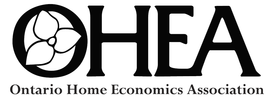|
By: Mary Carver, P.H.Ec.
We’ve all heard the story by now. In early December 2012, two Australian radio hosts prank-called a London hospital where Kate Middleton (Duchess of Cambridge) was being treated for severe morning sickness. By pretending to be the Queen and some other member of the Royal family, the radio hosts hacked minimum security and spoke directly to a staff member who appears to have innocently shared otherwise confidential patient information. The world soon learned the tragic outcome of that very foolish prank-call. Questions arise:
Professional ethics encompass the personal and corporate behavioral standards expected of employees, members of boards and associations. For the benefit of the public, most professional organizations internally enforce codes of practice, to prevent misuse of a client and to preserve the integrity of the profession. Such codes spell out boundaries of integrity for employees or members. Posting and reviewing a Code of Ethics is sound practice. The Ontario Home Economics Association (OHEA) a self-regulating body of professional Home Economists promotes high professional standards among its members so that they may empower families and individuals to achieve and maintain a desirable quality of life. Members of OHEA are expected to discharge their professional duties with integrity, to be competent in their field, to strive to make sound judgment and to communicate clearly so as not to dishonor the profession. OHEA reviews its Code of Ethics with its members, annually. The OHEA Code of Ethics is re-agreed at each membership renewal to serve as an active reminder of the principles of professional practice. How often do others dust-off their Codes of Ethics? Mary Carver, P.H.Ec. - Ottawa Ontario Home Economics Association © 2013
0 Comments
By: Ellie Topp, P.H.Ec. Welcoming in the New Year brings a sharpened focus on dates, at least until we remember to always write 2013, not the old 2012. Other dates good to keep in mind are those that appear on our foods. Many packaged foods carry dates that are prefaced by the words ‘Best Before’, ‘Packaged On’, ‘Sell By’ and even ‘Best if used before’. So how much attention should we pay to such numbers? First of all, it is important to understand that these dates are giving an indication of quality, not necessarily of safety. With the exception of infant formula, the dates on foods are not expiry dates, so that even though the date may have passed, the food will still be safe to eat. For foods meant for shelf storage at room temperature, such as canned foods and packaged baked products, the quality may not be optimal after the date on the package, but it will not be a health risk as long as the package has not been opened or damaged. These foods will keep for years following the date stamped on them, although they certainly would not have the greatest taste. With foods that have not had sterilization processing such as most dairy and meat products, the “Best Before’ dates should be followed more closely. These foods are intended to be used before the date on their package expires. As a general rule, they should be not be consumed after that date, although if kept refrigerated, may still be safe for several days after. Eggs are a somewhat unique product in regard to the date on the box. A very fresh egg will have a white that adheres tightly to the yolk and is what you want for frying and poaching. Older eggs will have a white that is more liquid but are still good to scramble and to use for baking as long as they have been kept in the refrigerator and have no cracks. According to the Egg Farmers of Canada, “Raw shell eggs will keep in the refrigerator without significant quality loss for up to three weeks after the “Best Before” date”. So that past-dated package of cookies hiding in the back of the cupboard is perfectly safe to eat, even if not very tasty. But for perishable products, keep in mind that it is perfectly legal to sell products after their ‘Best Before’ dates, so be sure to check the date on the package, especially for deli-type meats and dairy, before buying. And remember, good advice for any food is “When in doubt, throw it out”. Happy New Year! Ellie Topp is a Professional Home Economist and a Certified Culinary Professional (CCP) with the International Association of Culinary Professionals. She holds a Bachelors degree in Home Economics from Northwestern University and a Masters degree in foods and nutrition from the University of Wisconsin. Ellie has authored ten cookbooks including the best selling The Complete Book of Small-Batch Preserving now in its second edition and writes a monthly column, ‘Food Bits’, for Forever Young. With support from Canola Information Service and Health Canada, Ellie developed a safe method for making flavoured oils, the results of which were published in Food Research International in 2003. Ellie represents Ontario Home Economics Association on the Canadian Partnership for Consumer Food Safety Education where she serves as Secretary. She is an active member of the Ontario and Ottawa Home Economics Associations, the International Association of Culinary Professionals and Cuisine Canada. Ontario Home Economics Association © 2013 By Mary Carver, P.H.Ec.
One year ago, the cost of the Montreal Diet Dispensary (MDD) food basket was $7.46 per person per day (click here for the report). How does that compare with what you spend? Keep track for a couple of weeks or better yet - a month - to determine what you spend on food. Remember to omit non-food items including alcohol from the bill and count meals eaten out of the home. 5 Tips To Reduce Food Costs & Maintain a Healthful Diet: 1. Smart Planning is Essential The first step is to plan menus one week at a time. Take inventory of what’s on hand and what’s on sale. From your menus and advertised specials, make a grocery list. Avoid browsing for groceries - be on a mission to find only what you need. Over-buying and poor management of produce leads to expensive waste. Each trip back to the store adds to the cost and an empty pantry results in costly take-out. Avoid impulse buys by sticking to your plan. 2. Go light on expensive processed food Why pay for added sugar, sodium and preservatives that contribute to poor health? Packaging adds to the cost. Choose a variety of foods from each of the four food groups of Canada’s Food Guide: vegetables and fruits, meat or alternatives, bread and cereals and milk or alternatives. 3. Put yourself on a cash allowance when food shopping. Studies show that consumers that use plastic generally spend more. It’s much easier to be disciplined with a limited amount of money in your pocket. Advance planning provides a guideline on how much cash to carry. 4. *Get in the kitchen and cook is the surest way to ensure the best nutritional value for your buck. Eating well on a budget requires basic cooking skills. Designate one day per week to prepare large batches of comfort food such as soups, stews, muffins and cookies to freeze. Make it a family event to ease the workload and maximize the fun. Having delicious home-made food on hand reduces the temptation to eat out. *Look for Get in the Kitchen and Cook - a super cookbook by Emily Richards, P.H.Ec. 5. Eat vegetarian meals more often. Plant-based diets are increasing in popularity for good reason. They are economical and healthful. Discover quinoa, a complete protein, affordable, easy to prepare, super nutritious and yummy. Look for The Vegetarian’s Complete Quinoa Cookbook by the Ontario Home Economics Association in major bookstores and libraries. by Mary Carver (an Ottawa-based Professional Home Economist). Mary’s tips were picked up by the Vancouver Sun (Finance Section) on Jan. 7, 2013. Ontario Home Economics Association © 2013 By Mairlyn Smith, P.H.Ec. Size matters (we always knew that) but it really matters when it comes to portion sizes. Know what one serving of protein really looks like? You might be shocked, it’s a measly 75 g (2 ½ oz.) or 125 mL (½ cup) cooked fish, shellfish, poultry or lean meat. I am so concerned about the confusion on what a serving looks like that I taped a segment on CityLine airing Wednesday, January 9 all about portion sizes. If your New Year’s Resolution was to eat healthier, check out what a serving size is according to Canada’s Food Guide. Ontario Home Economics Association © 2013 |
The Ontario Home Economics Association, a self-regulating body of professional Home Economists, promotes high professional standards among its members so that they may assist families and individuals to achieve and maintain a desirable quality of life. Categories
All
Archives
April 2024
|
|
Subscribe to our mailing list
|
|
Unsubscribe from our mailing list
|
Copyright © 2023 Ontario Home Economics Association (OHEA). All Rights Reserved.



 RSS Feed
RSS Feed